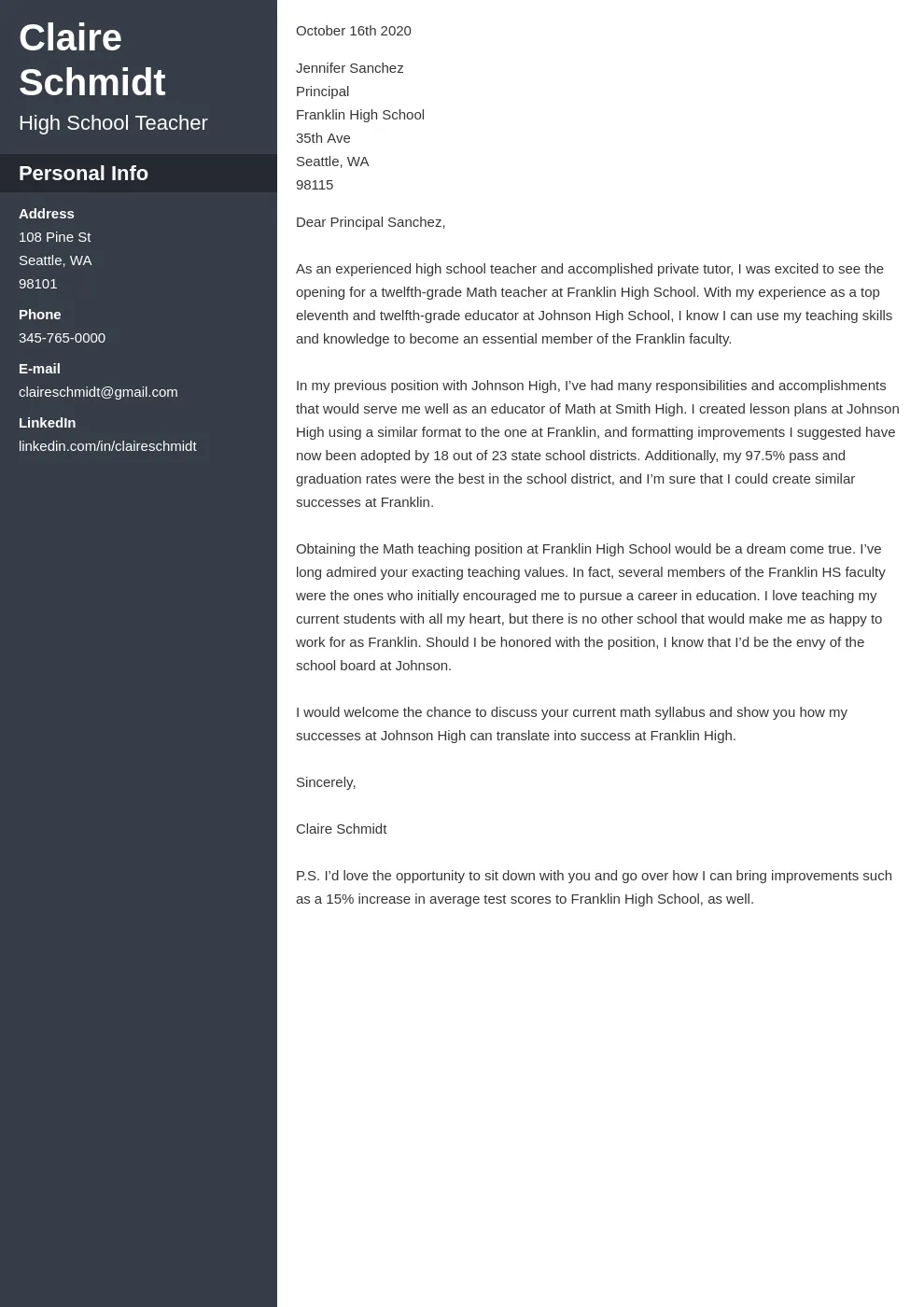Why You Need a Cover Letter
In the competitive job market, a cover letter is more than just a formality; it’s your personal introduction and a crucial tool to showcase your enthusiasm, skills, and how you’re a perfect fit for the role. While your resume provides a detailed account of your work history and qualifications, a cover letter offers the opportunity to tell your story, explain your motivations, and highlight specific achievements that align with the job requirements. A well-crafted cover letter can significantly increase your chances of landing an interview by capturing the employer’s attention and demonstrating your genuine interest in the position and the company. It’s an opportunity to make a strong first impression and differentiate yourself from other applicants, showing that you have taken the time to understand the role and what the company is looking for.
The Importance of a Cover Letter
A cover letter serves several vital functions in your job application. It provides context for your resume, allowing you to elaborate on specific experiences and explain any gaps or unusual career moves. It allows you to connect your skills and experiences directly to the job description, demonstrating to the hiring manager that you possess the required qualifications and understand the role’s demands. Additionally, a cover letter shows your personality and writing skills, crucial for many positions, as it reveals how you communicate and express yourself. It gives you a chance to showcase your passion for the industry and the company. By addressing the specific needs of the employer, a cover letter shows that you are not just sending out generic applications but are genuinely interested in the opportunity. It is a key element in demonstrating your professionalism and attention to detail, factors highly valued by employers.
Cover Letter vs Resume
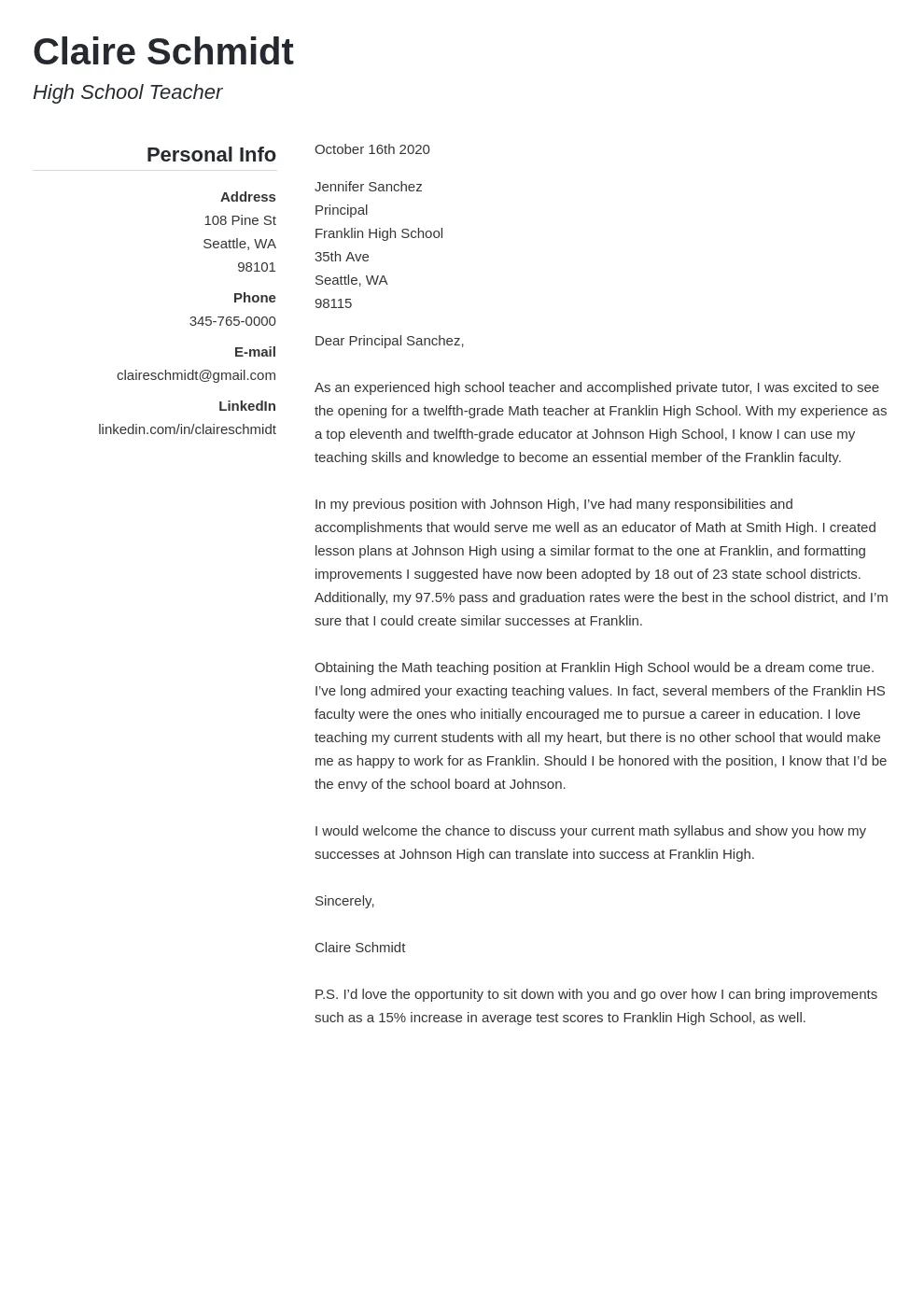
While both a cover letter and a resume are essential components of a job application, they serve different purposes. A resume is a concise summary of your work experience, education, skills, and accomplishments. It’s designed to be a quick overview that provides factual information in a structured format. The cover letter, on the other hand, is a more personalized document. It allows you to expand on your resume, explain your interest in the specific role, and highlight the relevant skills and experiences that make you a suitable candidate. Think of the resume as the ‘what’ – what you’ve done, and the cover letter as the ‘why’ and ‘how’ – why you’re interested and how your skills align. The cover letter’s more narrative format enables you to showcase your personality and communication style, elements often missing from a standard resume. A good resume will get you noticed, but a strong cover letter can help you secure an interview by making a more personal connection with the hiring manager.
Steps to Create a Cover Letter Free Online
Creating a cover letter online for free is a straightforward process, even if you’re starting from scratch. Many online platforms offer templates and tools that guide you through each step. This process saves you time and helps ensure your cover letter is well-formatted and professional. Start by choosing a reputable online cover letter builder that offers a variety of templates. Select a template that aligns with your profession and personal style. Then, carefully fill in your personal information, like your name, contact details, and the date. The most important section involves writing the content; this includes a compelling opening, highlighting your skills and experience, and customizing the letter for the specific job you are applying for. Once you’ve completed the content, proofread and edit your cover letter thoroughly. Finally, download the finished document in a suitable format and submit it with your job application.
Choose a Free Online Cover Letter Builder
Selecting the right cover letter builder is the first step in creating a professional cover letter quickly and efficiently. Several free online platforms offer intuitive interfaces, a variety of templates, and helpful guidance. Consider factors such as the ease of use, the range of templates available, and the customization options they offer. Some platforms provide built-in spell-check and grammar checks to help you polish your writing. User reviews and ratings can also give you insights into the platform’s reliability and the quality of the templates. Be sure to choose a builder that allows you to download your finished cover letter in a common format like PDF or DOCX, ensuring compatibility with most job application systems. Exploring different builders can allow you to find the best tool to suit your needs. Experimenting with different templates can help you tailor your cover letter to various jobs, demonstrating your adaptability and attention to detail.
Select a Template
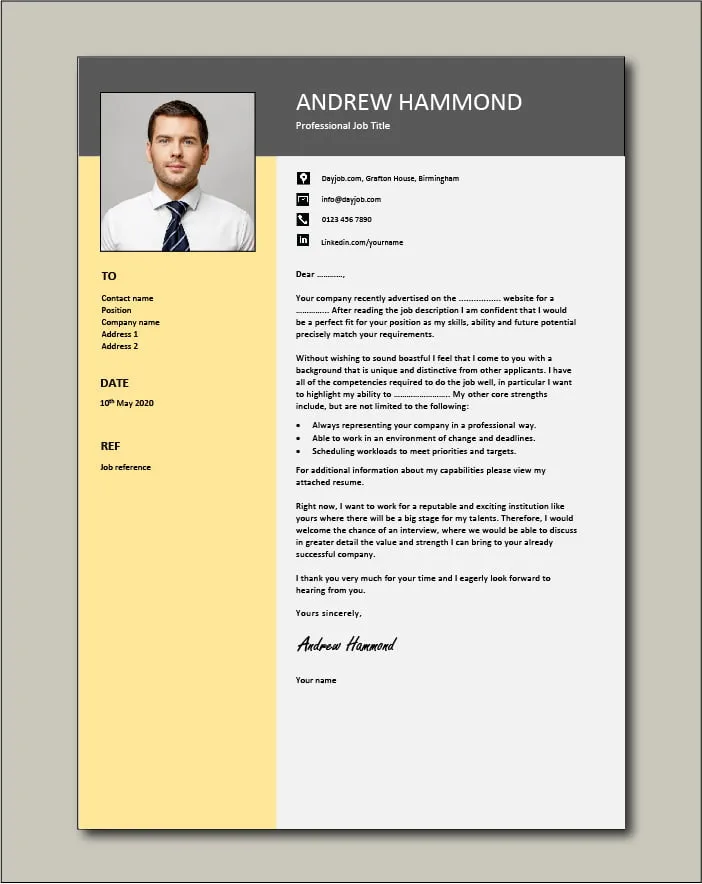
Choosing the right template is crucial, as it sets the tone and structure of your cover letter. A well-designed template provides a solid foundation, making the writing process much easier. When selecting a template, consider the industry you’re applying to and the type of job you’re seeking. Some templates are more modern and creative, while others are more traditional and formal. Ensure the template’s layout is clean and easy to read, with enough space for your content. Look for templates that have pre-formatted sections for your contact information, opening, skills, experience, and closing. Many online builders categorize templates by industry or style. This makes it simpler to find one that aligns with your needs. Preview the templates to ensure they look professional and are easy to customize with your information. Keep in mind that the goal is to create a cover letter that looks polished and presents your qualifications effectively.
Fill in Your Personal Information
Once you’ve selected your template, the next step is to fill in your personal and contact information. This section typically includes your full name, address, phone number, and email address. Double-check the accuracy of this information, as this is how potential employers will contact you. Also, make sure the date is correct, usually formatted at the top of your cover letter. The format for your contact information should be consistent with the style of your resume. You might also include a link to your LinkedIn profile or online portfolio if you have one. Ensure your email address sounds professional. Consider using a combination of your first and last names, and avoid using a casual or unprofessional email address. Taking care with this initial detail demonstrates your attention to detail, making a positive first impression. Proper contact information ensures that recruiters can easily reach you and move your application forward.
Write a Compelling Opening
The opening paragraph is your chance to grab the reader’s attention and make them want to read the rest of your cover letter. This is where you state the position you are applying for and how you learned about the opportunity. If you’re applying through a referral, mention the person who recommended you. Consider starting with a strong statement that showcases your enthusiasm for the role or company. You might mention a specific achievement or skill that aligns with the job requirements. Clearly state your purpose and why you are interested in this specific position. This opening should be concise, engaging, and tailored to the job description. Avoid generic openings like “I am writing to apply…” or clichés. Show your personality and demonstrate your understanding of the company. A well-crafted opening sets the tone for the rest of your letter, highlighting the key reasons the employer should consider your application.
Highlight Your Skills and Experience
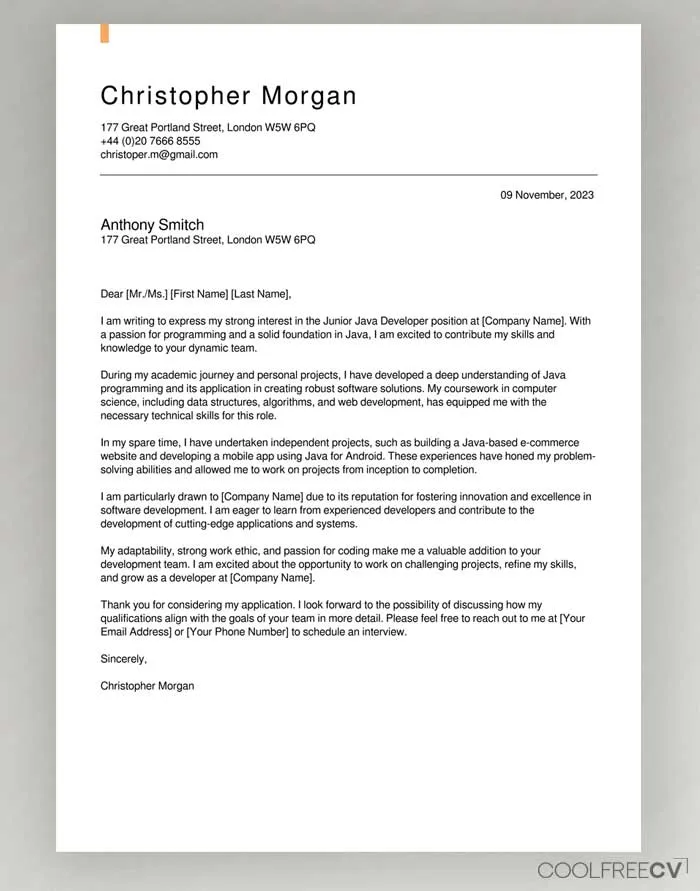
The main body of your cover letter should highlight your most relevant skills and experiences, directly matching the job requirements. Review the job description carefully and identify the key skills and qualifications the employer is seeking. Provide specific examples from your work history or other experiences that demonstrate these skills. Quantify your accomplishments whenever possible using numbers or data to show your impact. For instance, instead of saying “Managed social media,” you could say “Increased social media engagement by 30% within six months.” Focus on achievements that are most relevant to the role. Use action verbs to describe your responsibilities and accomplishments. Show how your skills and experiences align with the company’s needs and how you can contribute to their success. This section should be clear, concise, and compelling, convincing the employer that you are a strong candidate for the position.
Customize Your Cover Letter to the Job
One of the most important steps in crafting a successful cover letter is tailoring it to each job you apply for. Avoid using a generic, one-size-fits-all cover letter. Instead, carefully read the job description and research the company. Identify the specific requirements and tailor your letter to address them. This shows the hiring manager that you have taken the time to understand the role and the company’s values. Highlight the skills and experiences that are most relevant to the job. Use keywords from the job description throughout your letter. Demonstrate your knowledge of the company and explain why you are interested in working there. Personalize your letter by addressing the hiring manager by name, if possible. Tailoring your cover letter to each job makes it more impactful and demonstrates that you are genuinely interested in the opportunity, making a more significant impression on the hiring team. This level of customization significantly increases the chances of your application standing out and getting you an interview.
Proofread and Edit
Proofreading and editing are crucial steps in creating a professional cover letter. Errors can damage your credibility and make a negative impression on potential employers. Before submitting your cover letter, carefully read it several times. Check for spelling mistakes, grammatical errors, and typos. Use spell-check and grammar-check tools, but don’t rely on them completely. These tools can miss errors. Read your cover letter out loud to catch awkward phrasing or sentences that don’t flow well. Ask a friend, family member, or career counselor to review your cover letter. They can provide fresh eyes and spot errors you might have missed. Ensure your formatting is consistent and professional. Pay attention to the layout, spacing, and font style. A polished and error-free cover letter shows attention to detail, which is highly valued by employers. Taking this time to proofread is a sign of professionalism and can significantly increase your chances of getting an interview.
Download and Submit Your Cover Letter
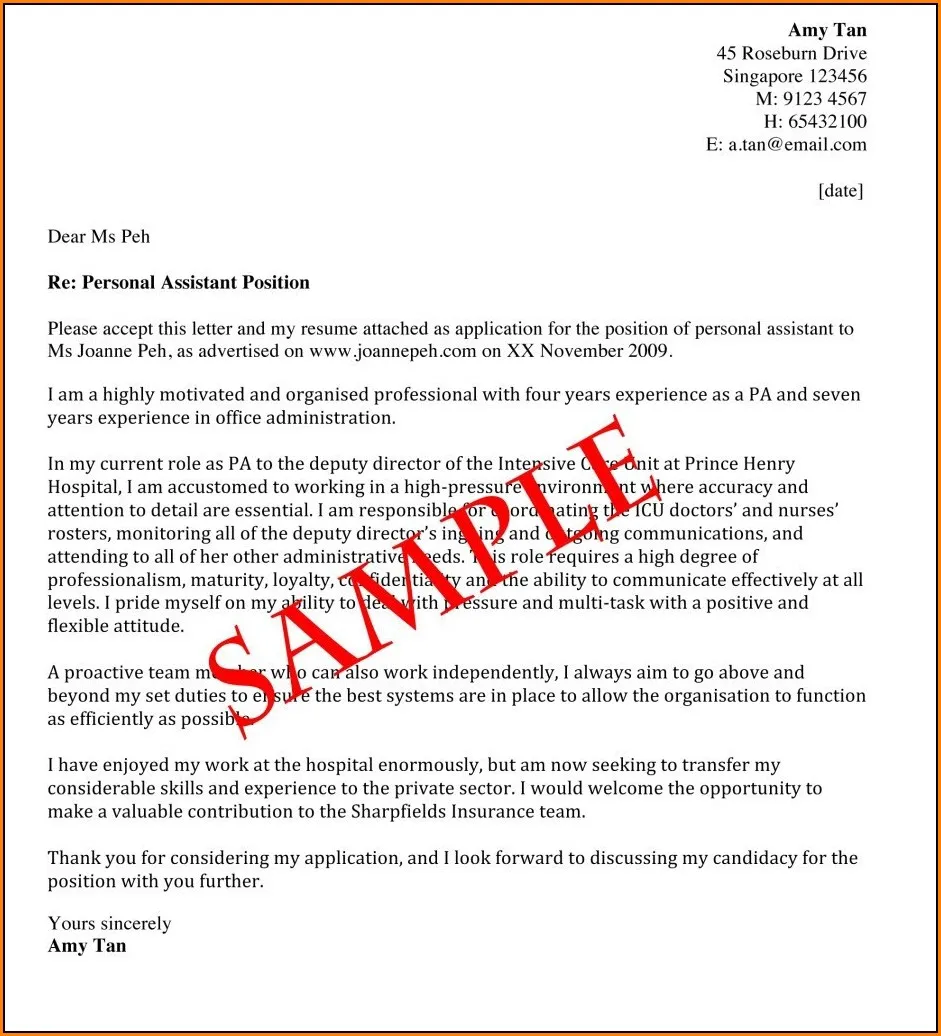
Once you have created and perfected your cover letter, the next step is to download it in a suitable format and submit it with your job application. Most online cover letter builders allow you to download your document in formats like PDF or DOCX. PDF is generally the preferred format, as it preserves the formatting of your cover letter and ensures that it looks the same regardless of the device or software used to open it. Always double-check the job application instructions to confirm which file types are accepted. When submitting your cover letter, make sure the file name is professional and includes your name and the document type (e.g., “YourName_CoverLetter.pdf”). Attach your cover letter to your application and ensure it is correctly placed with your resume. Check the company’s application system to confirm that your documents have been successfully uploaded. Submitting a well-formatted cover letter in the correct format showcases your professionalism and attention to detail, further enhancing your application.
Best Free Online Cover Letter Builders
Several free online platforms provide excellent tools for creating professional cover letters. These builders offer templates, customization options, and guided writing assistance to simplify the process. They streamline the creation of a compelling cover letter. Some of the top choices include Canva, Kickresume, Resume.io, and Zety. Each platform provides various templates, allowing you to select a design that aligns with your industry and personal style. These platforms often have user-friendly interfaces, making it easy to navigate and input your information. Many offer features like spell-check, grammar checks, and formatting tools to ensure your cover letter is polished and professional. Research and explore these platforms to discover the tool that best fits your needs, making the creation process straightforward and effective. They guide you through each step, helping you showcase your skills and experience effectively.
Canva
Canva is a popular graphic design platform that offers an extensive range of cover letter templates. Its drag-and-drop interface and ease of use make it ideal for beginners. Users can customize templates with their personal information, change fonts and colors, and add design elements. Canva provides numerous free templates, allowing you to create professional-looking cover letters without any design experience. It is very versatile, making it suitable for various industries and job roles. The platform’s flexibility lets you tailor your cover letter to match the branding of the company you are applying to. With its extensive library of design elements and ease of use, Canva offers an excellent free option for crafting visually appealing cover letters that help you stand out from the competition.
Kickresume

Kickresume is specifically designed for creating resumes and cover letters, offering a user-friendly interface and a variety of professionally designed templates. The platform provides prompts and suggestions to help you write each section of your cover letter, guiding you through the process. It also offers features like content suggestions and real-time feedback to improve your writing. Kickresume allows you to tailor your cover letter to the specific job description. Its ease of use and the helpful features make Kickresume a great choice for job seekers. It is a solid choice for creating a compelling cover letter. Its tools help you present your qualifications effectively. It also guides you through each step, ensuring your cover letter is well-structured and highlights your strengths.
Resume.io
Resume.io is a comprehensive platform that allows you to create both resumes and cover letters. The platform offers a wide array of customizable templates and writing tools. Resume.io provides content suggestions and guidance to help you write a professional cover letter that highlights your skills and experience. The platform simplifies the creation process. Users can easily add their details, choose from various design options, and customize the layout. This approach makes it accessible for users. Resume.io’s user-friendly interface and helpful features make it an effective tool for job seekers looking to create impressive cover letters. With its wide selection of templates and easy customization options, Resume.io enables you to craft a personalized cover letter that helps you stand out to employers. It’s a solid option for job seekers looking to create compelling application documents.
Zety
Zety is a popular online resume and cover letter builder known for its user-friendly interface and extensive range of templates. It provides expert-written content suggestions and guides you through each step of the writing process. Zety’s templates are professionally designed and easily customizable, allowing you to create a cover letter that reflects your unique personality. The platform offers real-time feedback and suggestions to help you refine your writing. Zety allows you to tailor your cover letter to specific job requirements, showcasing your skills and experiences effectively. It’s a great tool for job seekers of all experience levels. Zety’s easy-to-use interface and comprehensive features simplify the creation process. Its features ensures your cover letter is polished, professional, and optimized to impress potential employers.
Tips for a Standout Cover Letter
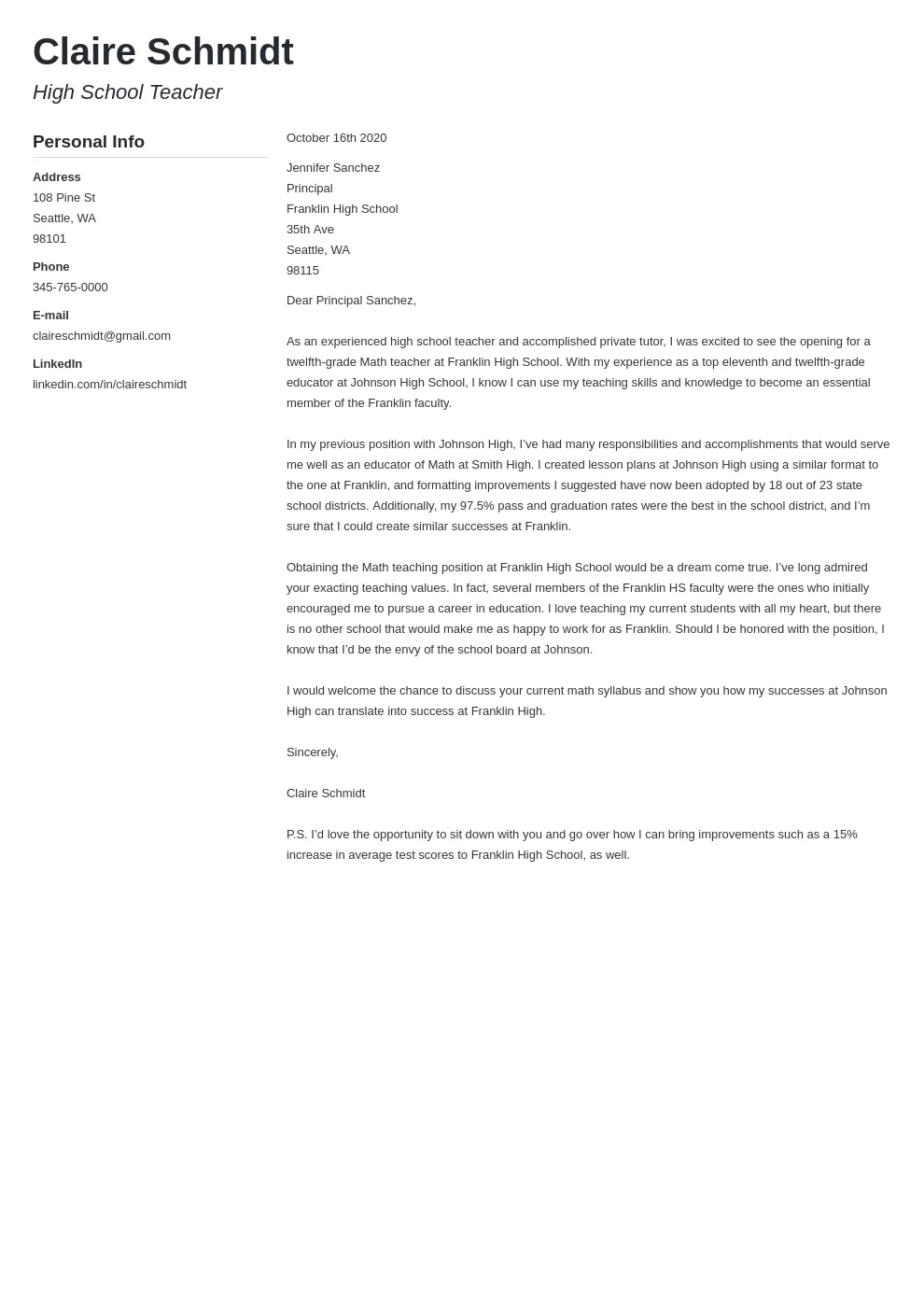
Creating a cover letter that stands out involves more than just filling in a template. To make a memorable impression on hiring managers, it’s important to incorporate several strategic elements. Start by tailoring your letter to each job application, highlighting the relevant skills and experiences for that specific role. Show your understanding of the company and the industry. It’s also essential to use a professional tone and format, ensuring that your writing is clear, concise, and free of errors. Use action verbs to describe your accomplishments and quantify your achievements whenever possible. By following these tips, you can create a cover letter that grabs attention, demonstrates your qualifications, and increases your chances of landing an interview. A standout cover letter will help you present yourself effectively. This ensures that your application documents make a strong first impression and make your resume stand out from the crowd.
Tailor Your Letter
The most effective cover letters are those specifically tailored to the job description and company. Generic cover letters are easily identified and often discarded. Instead, carefully read the job posting and research the company. Identify the key requirements and align your skills and experiences to match. Address the specific needs and challenges the employer mentions in the job description. Use keywords from the job posting throughout your letter. This shows you understand the role. Customize your letter by showcasing your knowledge of the company’s values, mission, and recent projects. This personalization demonstrates your genuine interest in the opportunity and increases your chances of getting noticed. Customizing your letter means showcasing your skills and also showing your interest in the company’s mission. Make the effort to tailor your cover letter. This makes you a more attractive candidate. It helps you make a stronger impression on the hiring manager.
Use Keywords
Incorporating relevant keywords from the job description into your cover letter can significantly boost your application’s chances of success. Many companies use Applicant Tracking Systems (ATS) to scan applications for specific keywords. If your cover letter lacks these keywords, it may be automatically rejected before a human even sees it. Carefully review the job description and identify the most important skills, qualifications, and requirements. Integrate these keywords naturally throughout your letter. Use these keywords in your skills sections. Make sure to incorporate keywords within your descriptions. It’s important to avoid keyword stuffing. Use the keywords in a natural and conversational manner. It’s essential to integrate relevant keywords, and to do so organically within your sentences. This strategy can help your application bypass the ATS filters and get the attention of the hiring manager, which helps improve the chances of an interview.
Keep it Concise
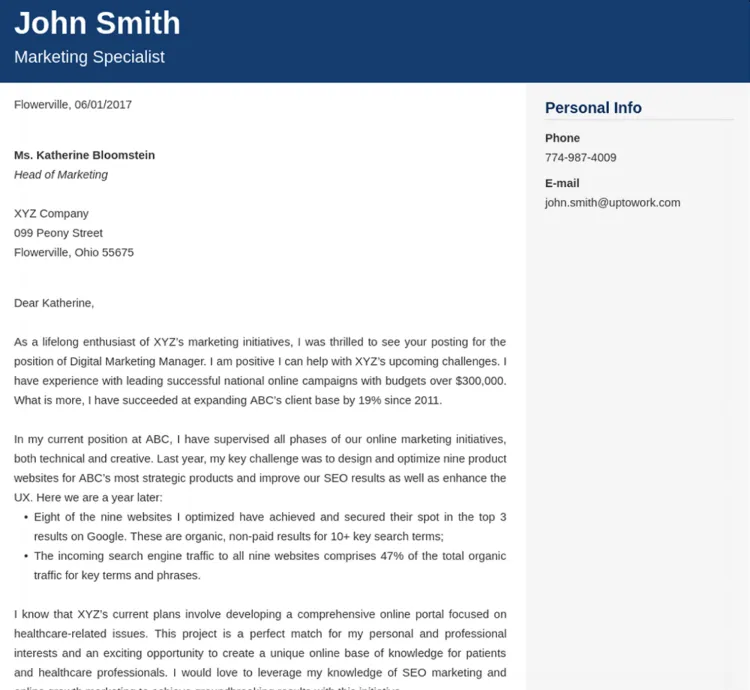
When writing a cover letter, it’s essential to keep it concise. Hiring managers often have a limited time to review applications, and they appreciate direct and to-the-point communication. Aim to keep your cover letter to one page. Focus on highlighting the most relevant skills, experiences, and achievements. Avoid unnecessary jargon and lengthy explanations. Start with a compelling opening. Quickly state the position you are applying for and why you are interested. Use clear, concise language. Get straight to the point and showcase your qualifications in a way that is easy to understand. Use bullet points or short paragraphs to organize information, making it easier for the reader to scan and quickly grasp your key selling points. By keeping your cover letter brief and focused, you increase the chances of holding the hiring manager’s attention and making a positive impression.
Proofread Carefully
Proofreading is a critical step in creating a standout cover letter. Errors in grammar, spelling, and punctuation can undermine your professionalism and significantly reduce your chances of getting an interview. Before submitting your cover letter, carefully read it several times. Check for any typos, grammatical errors, or awkward phrasing. Use spell-check and grammar-check tools, but don’t rely on them completely. These tools can sometimes miss errors. Proofread your cover letter with a fresh pair of eyes. Ask a friend, family member, or career counselor to review your letter. They can often spot errors you might have missed. Ensure that your formatting is consistent and visually appealing. A polished, error-free cover letter demonstrates your attention to detail and shows that you care about the quality of your work. Taking the time to proofread thoroughly will help you create a positive impression and increase your chances of success.
Common Mistakes to Avoid
Avoiding common mistakes is essential to ensure your cover letter makes a positive impression. Many errors can lead to your application being overlooked. These mistakes can significantly reduce your chances of getting an interview. By being aware of these pitfalls and taking steps to avoid them, you can greatly improve your application’s effectiveness and increase your chances of success.
Typos and Grammatical Errors
Typos and grammatical errors are some of the most damaging mistakes to avoid in a cover letter. These errors create a negative impression and suggest a lack of attention to detail, potentially signaling to employers that you are not thorough or careful in your work. Proofread your cover letter multiple times. Use spell-check and grammar-check tools, but don’t rely on them entirely. Ask a friend, family member, or career counselor to review your letter. They can often catch errors you might have missed. Before submitting your cover letter, ensure that all contact information is accurate. Double-check the recipient’s name and title. A well-written, error-free cover letter demonstrates your professionalism and attention to detail. It increases your credibility as a candidate.
Generic Cover Letters
Submitting a generic cover letter is another significant mistake. Generic letters fail to engage the reader. They give the impression that you are not genuinely interested in the position or the company. Generic cover letters rarely highlight the skills and experiences relevant to the job, or reflect your understanding of the company’s values. The key is to tailor your cover letter to each job. Demonstrate your knowledge of the company, its mission, and its recent projects. Highlight how your skills and experiences align with the specific requirements of the job. By personalizing your cover letter, you show the hiring manager that you have taken the time to understand the role and the company. This increases the chances of getting noticed, making you a much more attractive candidate.
Lack of Customization
A lack of customization is similar to submitting a generic cover letter and can be equally damaging. Many applicants fail to demonstrate that they understand the role and the company. Customizing your cover letter to the specific job and company shows that you have done your research. Customize your cover letter. This demonstrates a genuine interest in the role. Use keywords from the job description throughout your letter, and tailor your skills and experiences. Highlighting relevant skills shows that you are the right fit. Customizing your cover letter increases your chances of standing out from other applicants. This demonstrates your understanding of the role and the company. This greatly improves the likelihood of securing an interview.
Conclusion
Creating a cover letter free online in minutes is an achievable goal with the right tools and approach. By using online cover letter builders, you can access a variety of templates, customize your content, and quickly create a professional document. Remember to tailor your cover letter to each job, highlight relevant skills, and proofread carefully to avoid common mistakes. Following the steps outlined in this guide, and by utilizing the many available resources, you can craft a cover letter that makes a positive first impression. Creating a strong cover letter is an investment in your job search. It will improve your chances of landing an interview. A well-written cover letter showcases your qualifications and makes a lasting impact on potential employers, leading you closer to your career goals.
